Anyone can become a victim of identity theft, and the consequences can be severe. The emotional and behavioral impacts of identity theft on victims can continue for years, causing damage to individuals’ credit, finances and reputation. Even if fraud is detected, credit histories may be clean, and interest rates increase. That’s why everyone must learn how to prevent identity theft. Users should protect social security numbers and sensitive personal information when using the internet. Other strategies to combat this rapidly rising threat are changing passwords regularly, securing PCs and protecting mobile devices.

Table of Contents
What are the Types of Identity Theft?
Identity theft has increased and diversified with technological advancements. The following are some of the different types of identity theft.
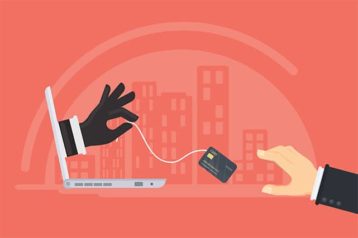
- Data Breaches
- Credit and Payment Card Theft
- Malware Activities
- Dark Web Marketplaces
- Mail Theft
- Unsecure Browsing
- Phishing and Spam Attacks
- Wi-Fi Hacking
- Mobile Phone Theft
- Card Skimming
Note:
These identity theft methods expose users to lifelong issues such as money loss, emotional anguish and loss of self-esteem. On the other hand, a data breach is a highly severe form of identity theft. Data breaches are the most harmful because criminals need data to succeed in all different types of identity theft. If a hacker has access to any user’s data, any kind of fraud or threat is achievable.1. Data Breaches
A data breach can be a long-term, complicated concern for the victim. A data breach occurs when an individual’s or organization’s confidential or sensitive information gets exposed to an unauthorized person without the system owner’s permission. Hackers can access people via the internet, Bluetooth, text messaging or any other online service, whether users are online or offline. A data breach can affect individuals, governments and high-level corporations. Anyone can endanger others, particularly in organizations that handle customer data.
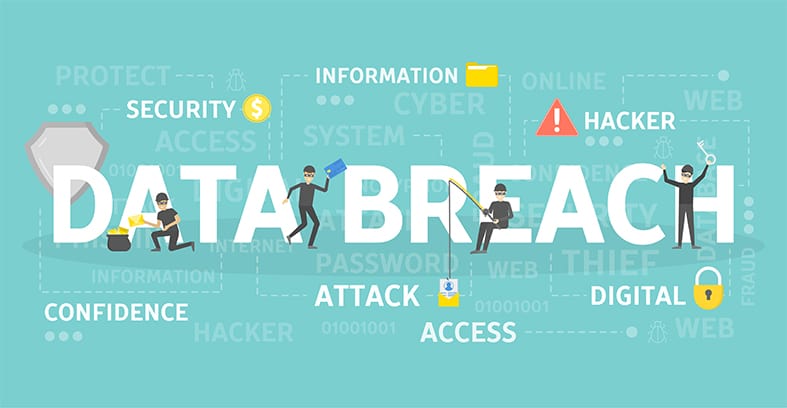
A data breach might happen because of an individual error, a company’s oversights or a deliberate attack. However, the most common data breach method is when a cybercriminal infiltrates a data source and obtains sensitive data. This can be accomplished by remotely accessing a computer or network to steal local files or circumventing network security. While hacking and malware attacks are the most common causes of data breaches, insider exposures, payment card fraud, the loss or theft of a physical hard drive containing files, and human error are other possibilities. Hackers commonly use malicious data breaches, including phishing, brute force assaults, malware, DOS (disk operating system) and ransomware.
Depending on the attacker’s purpose, the risk associated with data breaches is not unidirectional. However, an ignorant act can cause a data breach that can lead to significant harm if an attacker steals and sells business data for monetary benefit.
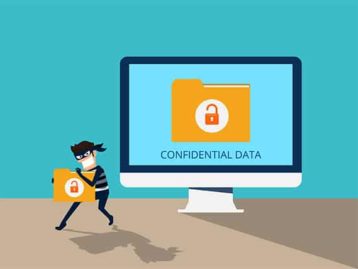
Malicious criminals follow a routine of investigating a company’s weaknesses and then getting malware into the system using various malware tactics. The criminal can then utilize the malware’s influence to hunt for data to steal, corrupt or expose. A data breach can also be highly damaging to a company’s brand and financial policies. Data leaks can also affect individuals, exposing everything from social security numbers to banking information. Hackers can then use the individual’s data to commit any fraud.
Because a breached system may affect every contact on the system, data breach prevention must involve everyone at all levels. Some of the best methods for preventing data breaches include using devices with robust encryption, multi-factor authentication, frequent software updates and adequate education of all internet users. Another strategy is using a password manager to secure personal credentials and boost cybersecurity.
2. Credit and Payment Card Theft
Credit and payment card theft is a significant threat that refers to fraud conducted with a payment card, such as a credit or debit card. The purpose of the theft could be to get goods or services or make a payment to a criminal-controlled account. Credit card fraud can be authorized when the actual cardholder processes payment to another account that a criminal controls. The theft can also be unauthorized if the account holder does not permit the payment to proceed and a third party carries out the transaction.
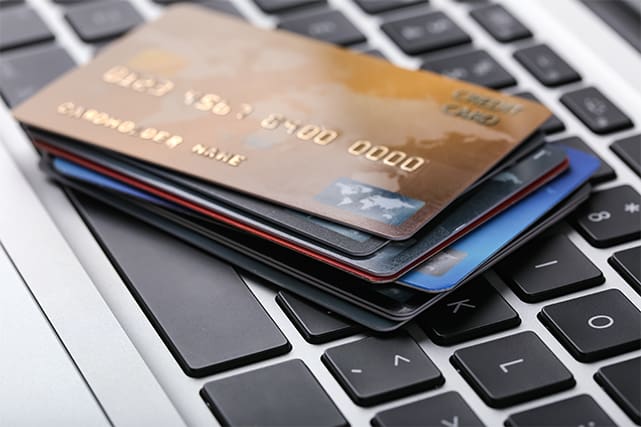
When a fraudster uses an individual’s stolen information obtained through a data breach to make unlawful transactions on a credit or payment card, this is known as credit or payment card theft. The hacker can also create a new account in the user’s name and conduct illegal activities, resulting in a hefty bill and perhaps affecting the user’s credit score.
There are two other types of methods that hackers can use in credit and payment card theft. The first method is card-present theft, which is rare nowadays. This strategy means that the hacker will always require the user’s credit card before committing any theft. However, presently, the most common method is card-not-present theft, which occurs without the cardholder’s consent or the presence of the card.
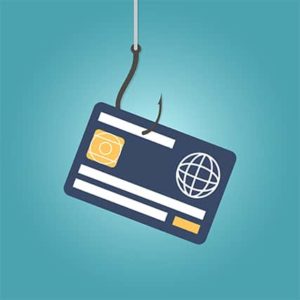
Database security errors have become highly costly because of the internet; hackers have compromised millions of accounts using this card-not-present strategy. Similarly, lost or stolen credit cards may expose users’ cards to theft, resulting in illicit purchases until the holder informs the issuing bank and the account is blocked.
Some of this card-not-present theft occurs via email, such as PayPal scams, in which a seller may receive an email that seems to be from PayPal informing the seller of an account update with confirmation links. These links may direct the seller to a fraudulent PayPal site that requests the seller’s login details. The fraudster will use the seller’s email and password to log in to the seller’s real PayPal account and withdraw money if the seller inputs information into the fake site.
One of the best ways to avoid this data theft is for customers to keep all card information private and not allow websites like Google Pay or PayPal to remember the card number. Consider reserving one of the credit cards for autopay accounts, such as wireless phone bills and online subscriptions. Then use other credit cards for day-to-day purchases. Another way to protect consumers’ cards is to make payments at stores using smartphone-based payment services like Apple Pay and Android Pay.
3. Malware Activities
Malware activities involve the download of harmful applications on a targeted computer to steal, encrypt, wipe or monitor the computer activity of end-users. Malware operations can result in a significant data breach, allowing unauthorized access to a user’s personal information. Most cyberattacks, especially large-scale data breaches that lead to widespread identity theft and fraud, are caused by malware. Malware attacks individuals, businesses, and even governments for monetary gain or data breaches.
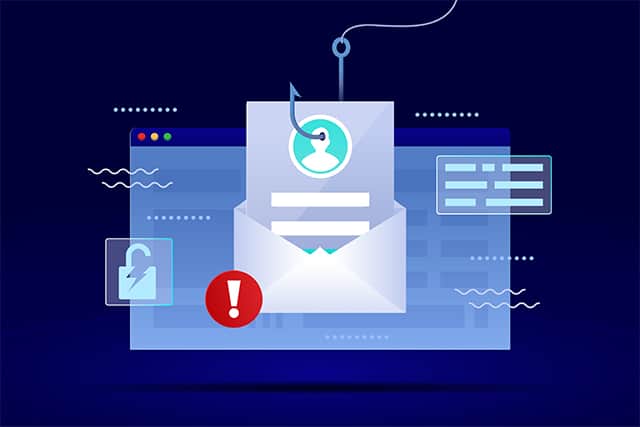
Malware activity includes phishing, DOS, spyware, worms and others infecting a user’s machine. The internet and email act as the two most prevalent channels for users’ vulnerability to malware. Malware can infect a victim’s connections by hijacking messaging clients and sending infected attachments or malicious URLs to the user’s contacts. Hackers can also embed malware in adverts and distribute malware on popular websites. When people click on the infected ad, the computer may download a harmful application.
Individuals and organizations are equally at risk from harmful activity. For instance, an insider’s malicious behaviors could impact the confidentiality, integrity and availability of all types of data and services, and thus indirectly on the company’s reputation, consumer loyalty and employee experiences.
A data breach can cost a company’s or organization’s reputation and cause bankruptcy to anyone. To reduce risks, organizations should apply the principle of least privilege (PolP), ensuring that each user account has only the permissions necessary to perform specific roles assigned to individuals. Most importantly, both individuals and corporations should invest in a competent cybersecurity program. If a website gets infected with malware, the program will detect the threat, block the download and prevent malware from entering the network.
4. Dark Web Marketplaces
Dark web marketplaces are well-known as a natural habitat for individuals who conduct illegal online activities. These obscure markets exist in a hidden layer of the internet known as the “dark web,” which has become a popular place for trading stolen identities.
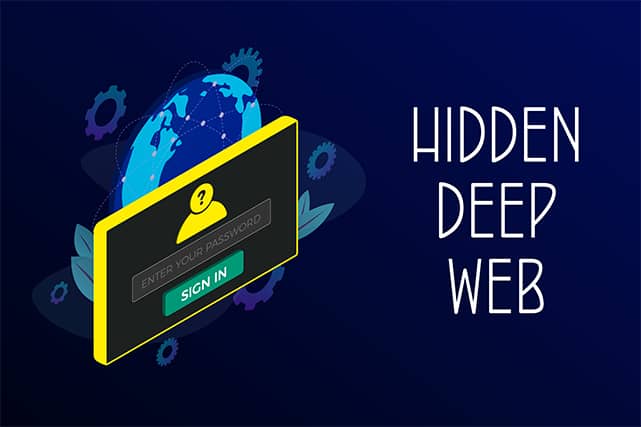
Cybercriminals frequently use software to get sensitive personal data such as credit card numbers or bank account details from online users. Hackers may use the information for illicit purposes or to sell to the highest bidder. A stolen identity is also a long-term investment for criminals. Hackers can sell an identity several times and use the stolen information to perpetrate multiple types of fraud.
On the dark web marketplace, cybercriminals use stolen identities in various ways, including shopping online under a false name, applying for school loans, state assistance, car loans, mortgages, and accessing online bank accounts through forged documents.

Examples of personal data traded on dark web marketplaces are selfies with IDs, driver’s licenses and other ID copies, passport copies, credit cards, medical records, email and social media accounts. Hackers can easily withdraw funds or purchase online with complete credit card information—number, name, expiration date and CVV code.
When data breaches occur, the information involved does not simply vanish. Cybercriminals frequently upload and store victims’ personal information on the dark web and sell the data as a commodity. Because there is an internet market for selling people’s identities, the rate of identity theft is increasing year after year. As a result, individuals must take all necessary precautions to secure personal identities both offline and online. Users can use strong banking logins to make security more difficult to hack. Also, keep both antimalware and antivirus software up to date to avoid malware that sends data directly to dark web brokers.
Furthermore, every internet user requires a high-quality VPN to encrypt all data transmitted between the user and the internet.
5. Mail Theft
Mail theft is when someone steals another person’s mail to commit a crime using the victim’s personal information. Criminals can also scour people’s mailboxes for cash, checks or any other file containing sensitive or confidential information that could aid in identity theft. Mail theft is dangerous, just like other forms of identity theft.

Official communication relies heavily on the use of mail. People’s mail may contain sensitive information, such as financial information and confidential details. Some of the information that hackers may need for further theft include names, addresses, social security numbers, phone numbers, email addresses, credit cards, bank account information and employment history.
Most criminals prey on postal services and personal mailboxes to steal filled checks and papers. The thieves then can sell the stolen documents on social media networks. When the buyer gets the victim’s paperwork, the buyer can change the specifics, such as the payee and the amount, to massively loot the victim’s bank accounts. Criminals can also use the stolen information to perform other crimes, potentially causing the victim’s identity to get compromised in the future.
Sometimes victims receive an unexpected W-2 or 1099 document, which means that someone filed for benefits or earned income under the victim’s name.
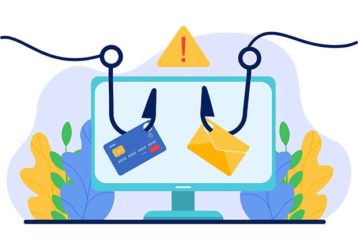
Changing address forms included in consumers’ credit card statements and other invoices is another technique for cybercriminals to benefit from stolen mail. The cybercriminal can then pose as the legitimate account holder and report a lost or stolen credit card, requesting a replacement card mailed to the new address.
Users need to take precautions to safeguard all identities against identity theft. Having a mailbox with a lock is one of the preventative strategies. When mailing anything, strive to be as secure as possible. Instead of using a mailbox, drop off checks or other sensitive information at a post office. Users can also pay invoices online, which is faster and more secure than mailing. Individuals should always request that all mail be held when out of town and pay attention to any strange behavior.
6. Unsecure Browsing
When users’ traffic gets intercepted by someone else on the internet, this is known as unsecure browsing. Two examples of unsecure browsing are using open public Wi-Fi or accessing unsecured websites. Malware has compromised some websites, exposing users’ personal information to unauthorized access. As a result, sharing any information on an insecure website that hackers have compromised may risk users’ sensitive data. Some browsers warn users when visiting a potentially dangerous website.
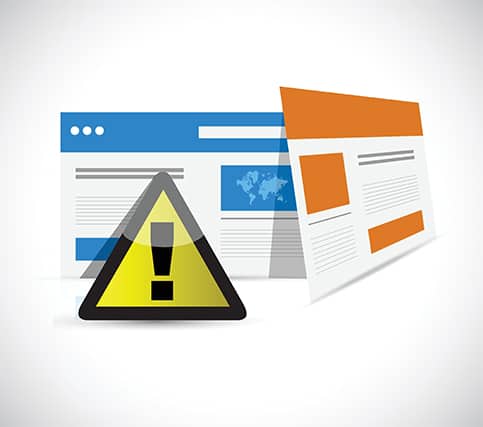
Unsecure browsing can take several forms. A cybercriminal can eavesdrop on any network when users browse on an unsecured public Wi-Fi or use public computers with a few easy tactics and tools. Before inputting personal information such as bank accounts on a shared computer, users should consider the dangers attached. A hacker could have installed malware on the computer, stealing anyone’s sensitive information.
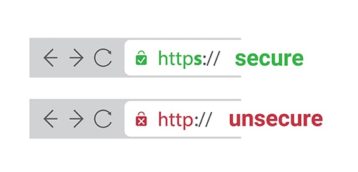
Visiting an unsecured website is the most typical form of unsecure browsing. Users should know the HTTP and HTTPS encryption when visiting any website. Websites that use plain old HTTP rather than HTTPS (with an s for Secure) do not provide the same level of security. Visiting any website that uses HTTP can expose users’ personal information.
The most significant danger of insecure surfing is that hackers can gain access to users’ data and utilize the information for identity theft. Hackers can file tax forms and collect refunds on behalf of users, take over all existing social media accounts and impersonate people.
Using a VPN to encrypt all traffic coming to and from users’ devices is one of the best ways to protect oneself from unsecured browsing. After using a public computer, always log out and remove all browsing history. Users should also avoid browsers that do not support HTTPS encryption. And consumers may protect all data from identity theft by utilizing a web browser designed with security in mind.
7. Phishing and Spam Attacks
Identity thieves can gather personal information in bulk through phishing and spamming. Phishing is when a criminal uses a trick, such as a fake email, to trick others into giving up personal information. Cybercriminals usually craft emails appearing from a reputable source, such as a bank or an employer. However, the user may be transmitting sensitive information to a cybercriminal by responding to the mail.
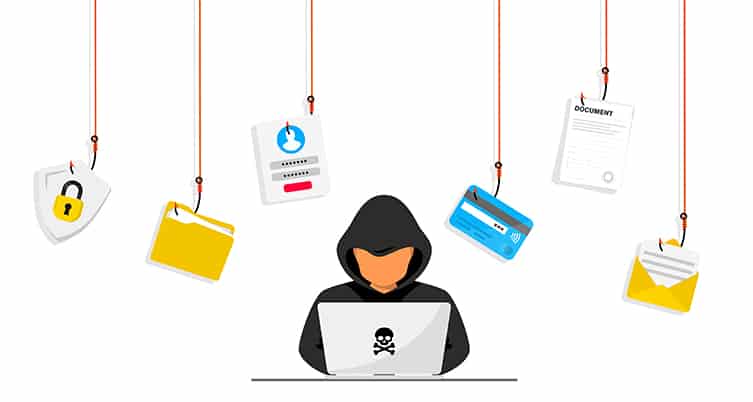
The purpose of phishing and spamming is to collect personal information from people. This theft can take the form of a website requesting a login and password and credit card or Social Security number information.
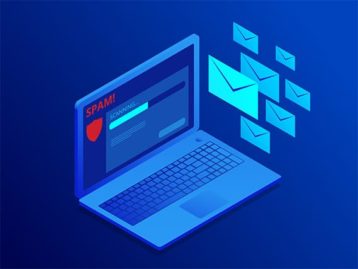
Another kind of attack is for a criminal to look for personnel names in a company’s marketing department and acquire access to the most recent project invoices. The attacker sends an email to a departmental project manager while pretending to be the marketing director. The content, style and logo may all be identical to the company’s standard email template. The email can contain a link to a password-protected internal document, a faked version of a stolen invoice. The link may direct the manager to log in to access the document. The attacker obtains complete access to sensitive sections of the organization’s network by stealing the PM’s credentials.
Phishing is extremely dangerous, and no company can afford to be a victim. An organization that falls victim to such an attack suffers significant financial losses and a loss of market share, reputation and consumer trust. Depending on the extent, a phishing attempt could turn into a security disaster from which a company will struggle to recover. Unauthorized purchases, money theft and identity theft are examples of phishing from individuals.
Pro Tip:
Protection against phishing and scams is vital, and both individuals and businesses should model and adopt these procedures. Users should implement robust password management procedures and two-factor authentication (2FA), the most effective strategy for preventing phishing attempts.8. Wi-Fi Hacking
Whenever internet users use a vulnerable Wi-Fi router, Wi-Fi hacking can happen. An unsecured Wi-Fi network is a weak point that hackers can exploit easily, leading to data breaches.
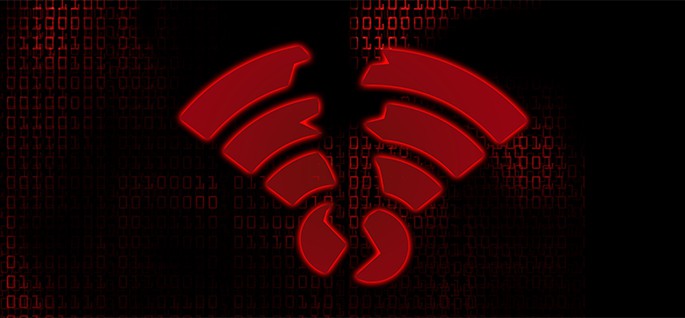
Hackers can easily log in using the default user credentials that came with the router if the router’s password is not changed.
Wi-Fi hotspots that aren’t encrypted, such as those found in cafes, airports and other public locations, are also excellent targets for Wi-Fi hacking. The hacker doesn’t even have to break the password to get access. Once a hacker has access to a user’s router, the hacker can reroute traffic to pharming websites or install malware, such as sniffers that gather data.
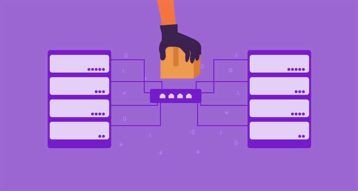
Hackers can also use a Man-in-the-Middle (MITM) attack to access sensitive information. A hacker, in this case, intercepts two parties’ communications. The perpetrators may then listen in on the chat or transmit phony messages to anyone involved. Both parties will be unaware that attackers are listening in and undertaking a MITM attack.
All of these attacks have the potential to be disastrous to both individuals and organizations. When a hacker successfully hacks a user’s router, a third party can do identity theft, malware assaults and website reroutes. Criminals can use any stolen users’ information to commit identity theft of any kind. Hackers can use customers’ credit cards to make transactions, obtain legal documents in the victims’ names, open bank accounts and apply for loans.
This is important:
When connecting to an unprotected Wi-Fi network, users must be cautious. When using Wi-Fi, people should also use a VPN, which encrypts all internet traffic.9. Mobile Phone Theft
Thefts of mobile phones are among the most common types of theft, exposing a higher percentage of users’ personal information. This theft is conceivable since many people use smartphones to store critical information that the hacker could utilize for illegal activity. Mobile phones are convenient and accessible but highly vulnerable to theft. Mobile phone theft is most likely to happen in a public area where people are distracted, such as bars, nightclubs, restaurants or public transportation.
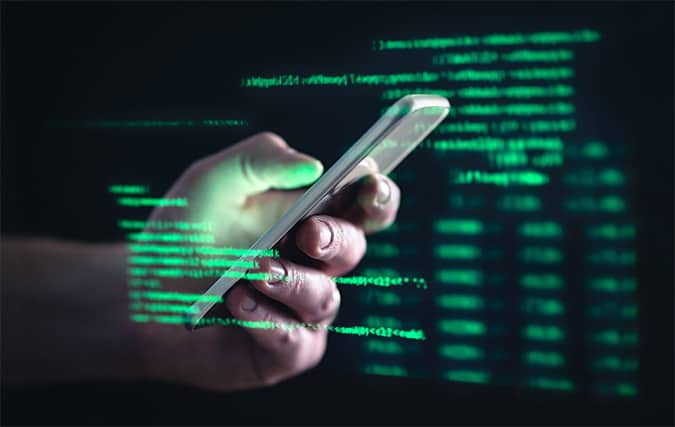
The risk associated with mobile theft is identical to that of all other robberies. If a hacker obtains users’ information from a stolen or lost mobile phone, the hacker will access the user’s data. Any of the user’s stolen data could be used by the hacker to inflict greater devastation. With user data, an identity thief can commit a variety of frauds.
Users of mobile devices can abide by several precautions to lessen the risk of mobile phone theft. Some of the simplest methods to protect mobile phones are using a security lock code and downloading a tracking app. These apps allow users to instantly locate the device using another smartphone, laptop or computer.
Users can even send a message to the phone from afar, instructing anyone who finds the phone to get in touch. When a smartphone or tablet gets lost, these apps assist the police in recovering the phone.
10. Card Skimming
Identity thieves use skimming to steal payment and personal information from credit cardholders in a secretive manner. Criminals commonly use skimmers, a device that reads data from a card’s magnetic stripe or chip. Each year, skimming technology improves, and some machines can even function as point-of-sale machines.
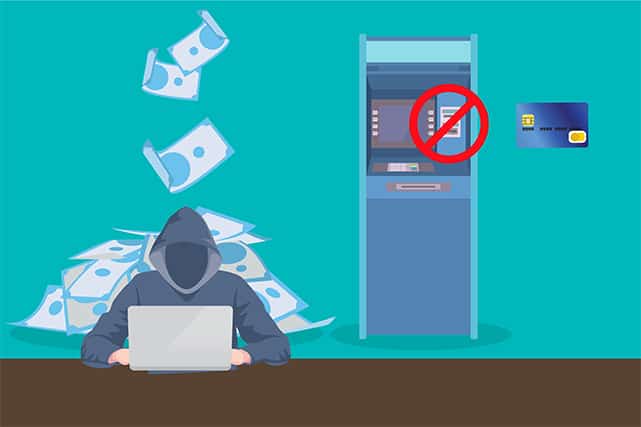
Skimming can happen when a cardholder uses an electronic payment card in a physical location. Some scammers may photocopy or photograph information that can assist in fraudulent acts. A touchpad may be included in some skimmers, allowing the thief to enter a security code. Skimmers as thin as a credit card can be placed into ATMs and gas stations.
A skimming device with cameras and overlay touchpads can be mounted on an ATM to obtain unique personal identification numbers. Because card readers are generally outside at the gas pump, gas stations are another target where hackers can deploy skimming devices.
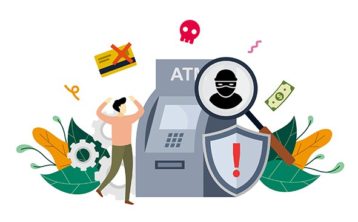
Skimming carries the possibility of the skimmer using the data to clone cards or commit card-not-present fraud. If the account is accessed with a debit card, the skimmer may need the user’s PIN. Skimmers steal PINs with a camera, or the card reader may contain a camera. Identity thieves may even place a false keypad on the machine’s pad, which will capture the PIN directly.
Cardholders should avoid any suspicious equipment used in electronic payment. If a thief utilizes more than one device to accomplish an electronic transaction, users should be cautious.
Cardholders should keep custody of credit cards to avoid unauthorized access to the cards. Dining at a restaurant that offers a group checkout can also help to guarantee that a card is not compromised when taken from the cardholder.
Organizations should implement an electronic fraud security system that can notify people of any cyber threat or fraudulent activity. Payment card providers should also improve security and fraud protection measures.
What are the Effects of Identity Theft
Identity theft is often harmful to the victim and can leave individuals in a state of distress. Some of the consequences of identity theft are given below.
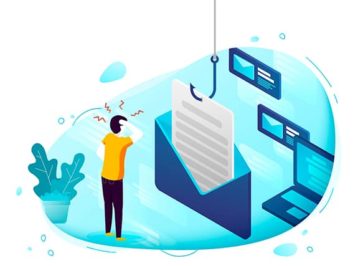
- Psychological Stress: An identity theft case can take countless years to resolve. In many cases, victims are traumatized by the possibility of the identity case resurfacing in the future. Financial insecurities, stress and anxiety can affect mental health in the long term. Many identity theft scams have resulted in the loss of vehicles, homes, life savings, and bankruptcy. The psychological pain of loss, helplessness, wrath, isolation, betrayal, rage and even embarrassment can overpower victims of identity theft. This crime instills significant apprehensions about financial security, family safety, and the capacity to trust again.
- Loss of Money and Property: The loss of personal funds is the most severe consequence of identity theft. The bank or corporation that issued the card will often pay fraudulent purchases made with stolen credit or debit card information. Money taken by other methods such as wire fraud, fake money orders or cashier’s checks, on the other hand, can be more difficult to retrieve and prove. If the victim overlooks the fraud, the chances of retrieving the stolen funds are considerably reduced. In some cases, the situation may irreparably damage the victim’s financial situation. Years can pass before the victim can recover lost assets, and users may never recover the funds. Similarly, identity thieves can seize control of a victim’s investment and other financial accounts through account takeover, which can have severe consequences for the victim’s retirement, mortgage and children’s schooling.
- Tainted Identity: Hackers can steal people’s identities to commit crimes, resulting in the victim’s incarceration. The name-clearing procedure may take some time, and the theft record may still appear on background checks, affecting everything from employment to housing prospects. Victims may also lose houses if the credit and mortgage are affected. Thieves using the victim’s Social Security number may gain access to the victim’s medical benefits and even alter the victim’s medical records. For instance, when the true identity is under the care of a physician or when there is an emergency and doctors do not have the correct health information, this could have serious repercussions.
- Loss of Employment: Identity fraud affects victims’ jobs and overall credit scores, making it difficult for victims to qualify for credit cards, mortgages or other forms of finance. More than half of employers conduct background checks. Many do credit checks in addition to drug tests and criminal background checks; therefore, a victim of criminal identity theft may have trouble finding work. According to the Identity Theft Resource Center, a third of identity theft victims have had work troubles due to the scam. Fights with the victim’s boss, job loss and difficulties finding new work are also possible consequences.
How to Protect Against Identity Theft
The goal is to create as many practical obstacles as possible to mitigate the impact of identity thieves on personal data. The crime rate may decrease if more people understand how to protect against identity theft. Some of the methods for preventing data theft are outlined below.
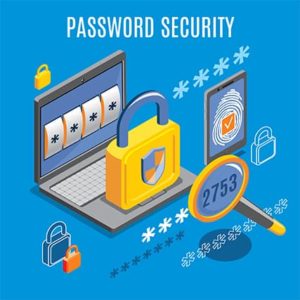
- Use a Unique Password on All Devices: Leaving a device without a password is equivalent to leaving a door unlocked. All of the user’s email, financial, and personal information kept on the phone is easily accessible if the device falls into the wrong hands. Users should create distinct passwords to make passwords uncrackable by hackers. When people use the same weak password across all devices, hackers can quickly obtain access to users’ accounts.
- Watch out for Phishing Attempts: Individuals must easily recognize and prevent phishing attempts. Scammers might pose as government authorities or trustworthy organizations such as banks, hospitals or schools to steal personal information from users. Regardless of how helpful the call sounds, do not give any private information to the scammer. Scammers may also send victims an email. Avoid clicking on any suspicious-looking links in emails or text messages in this scenario. These emails may even instruct recipients to click an attachment that contains destructive malware.
- Use Strong Authentication and a Password Manager: Don’t reuse passwords and use a password manager to create and store complicated, unique passwords for all accounts. Using an authenticator software program can help to lessen the risk of identity theft. Consider the kind of information shared in public to prevent handing out sensitive information or answers to security questions.
- Check Credit Reports Regularly: Credit reports primarily reflect the activities of an individual’s financial accounts, including the most recent reported amounts. People can quickly notice abnormalities by regularly checking credit reports. Check for unlawful transactions by comparing receipts to account statements. If an individual detects any questionable activity or information, acting promptly is critical to prevent the problem from deteriorating.
- Monitor Financial and Medical Statements: This is vital in preventing and detecting any potentially harmful conduct. Examine the financial statements to check that all transactions have been recorded. Keep track of bill due dates and call to inquire about upcoming spending. To avoid health care fraud, review “explanation of benefits” statements to check the services delivered.
- Protect All Personal Documents: If not properly cared for, physical papers can pose a security concern. These papers may contain personal information such as Social Security numbers and financial information valuable to identity thieves. People should avoid leaving mail in the mailbox for an extended period since identity thieves may target the mailbox. Request a mail hold or have a trusted neighbor pick up the mail when out of town. Do not leave any ATM, credit card or retail receipts behind. Identity thieves can use receipts to piece together people’s personal information.
- Use a Digital Wallet: People should use digital wallets when paying online or in a store. This is because transactions are tokenized and encrypted, making payment more secure. Contactless transactions also pose fewer health concerns. Shred All Expired or Unused Documents: Receipts, credit offers, account statements, pre-approval offers, investment statements, and expired credit cards should all be shredded. This shredding can help protect personal information from identity thieves. All internet users should use antivirus software to avoid viruses. Any installed software, such as antivirus and VPN, must be updated to the most recent version to function properly. Users must check for software upgrades regularly.
- Use a Secure Browsing Channel: Users are vulnerable to identity theft simply by browsing unprotected websites. HTTPS encryption is required for users to access websites. A website that uses HTTP without the “s” can infect users’ devices, resulting in identity theft.
How to Check and Recognize Identity Theft
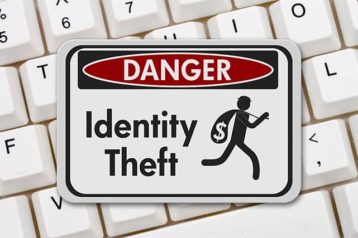
Identity theft can have various consequences, and users must be educated to recognize and comprehend the early indicators of robbery. Knowing the warning signals of impending identity theft can assist people in acting more quickly to prevent theft. Inability to get household bills notifications is one of the signs of identity theft. The lack of invoices in the mail could indicate that hackers have tampered with users’ personal information. The identity thief might have also changed the billing address to prevent actual users from seeing account statements. When an individual finds unidentified charges on personal financial statements, an account breach could occur.
The consumer might receive information from a corporation that issues financial credit cards about a suspicious transaction attempted on the card. Users must address the problem right away to avoid recurrence. If a user’s credit request is denied despite having a solid credit history, there might be a possibility that an identity thief has targeted the person. Also, when a person is authorized for a loan, but the interest rate is higher than expected, that could be a sign of identity theft.
Finally, individuals can verify personal identity theft status and avoid identity theft by subscribing to monitoring services. Identity theft protection services such as credit monitoring, identity monitoring, identity recovery services, and identity theft insurance are available from various companies. This service is also available through a bank or credit union, a credit card provider, an employer’s benefits program or an insurance company.
What are the Best Identity Theft Protection Tools?
The best identity theft protection tools are outlined below.
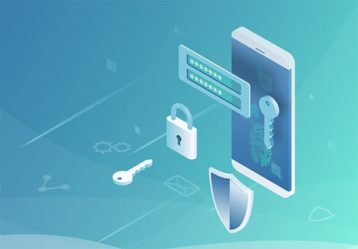
- IdentityForce
- Experian IdentityWorks
- ADT Identity Protection
- Zander Identity Theft Protection
- Complete ID
- IDNotify
- Eversafe
- Credit Squad
- MyFico
- Identity Guard
- ReliaShield
Identity theft protection services can assist users in keeping track of data breaches. These services keep track of personal information, credit files, and online activities, alerting users to questionable or fraudulent conduct. These technologies can also contact credit bureaus, banks, and creditors on the person’s behalf and, if necessary, assist in restoring the person’s identity.
Identity theft protection software also includes credit monitoring from one or more credit bureaus. A change in credit score can indicate identity theft because a loan can get accrued in someone’s name, and then the loan defaulted on before the individual can even be aware of the loan.
If an occurrence is observed while monitoring these activities, the subscriber to the identity theft protection can receive an alert. This allows people to be proactive and shut down the breach before escalating. Some identity theft prevention services include antivirus software and cybersecurity and social media monitoring capabilities.
Where You Can Report Identity Theft
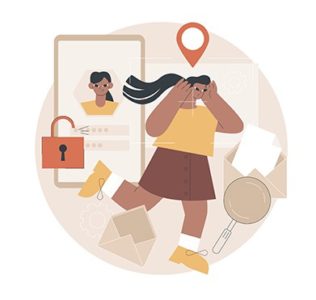
Identity theft can be reported to the Federal Trade Commission (FTC) online at identityTheft.gov or over the phone at 1-877-438-4338. The requirements for these types of reports are different. Whether the victim receives an identity theft report is dependent on whether the victim reports identity theft online and by phone. An identity theft report aids in establishing to businesses that the victim’s identity has been stolen. This report aids in the resolution of issues arising from identity theft. On the other hand, victims who complain online will obtain an identity theft report.
Additionally, victims can place a theft alert by contacting one of the best identity theft protection services, such as Experian. Users should obtain a copy of the credit report to ensure that no one has previously attempted to open unauthorized credit accounts using the person’s actual personal information. Also, make sure the credit reporting agency will notify the other two credit bureaus.

